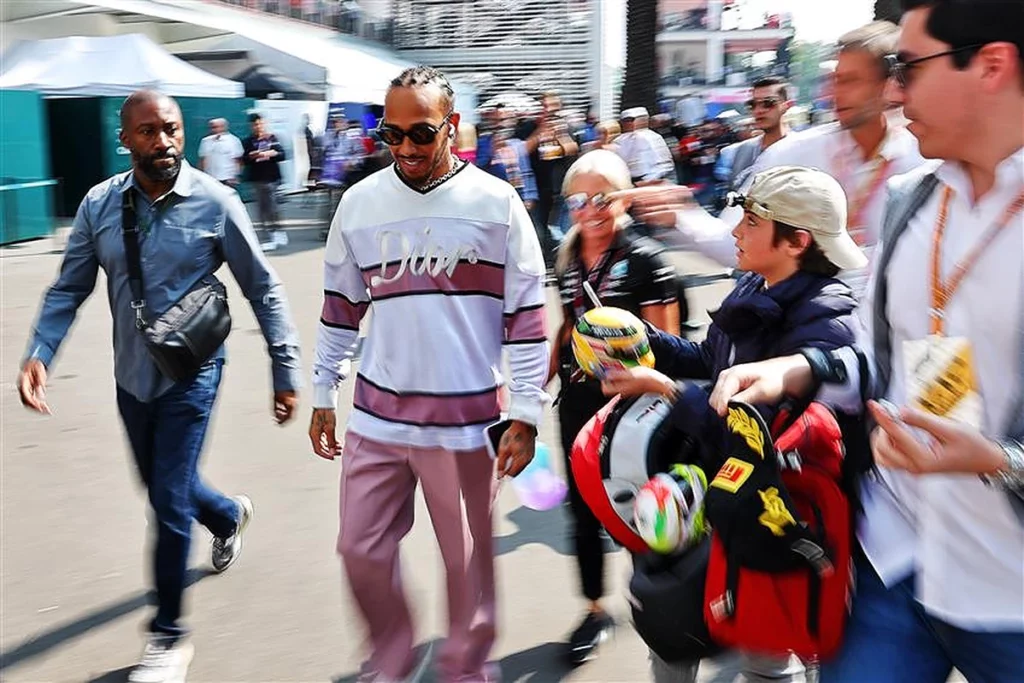Last weekend’s Mexican Grand Prix was arguably Mercedes’ best chance of claiming their first victory of the season, given that both Lewis Hamilton and George Russell had demonstrated incredible pace all weekend at the Autodromo Hermanos Rodriguez.
Whilst it was Max Verstappen who ultimately claimed yet another victory, many had tipped Mercedes to claim victory following what had been a strong weekend.
Russell had managed to top FP2 and FP3, whilst Hamilton claimed top spot in Q1 and Q2, before it seemingly all went wrong in Q3.
Ahead of Q3, Hamilton was favourite to claim a 104th career pole position; alas, it wasn’t to be following an issue with his Mercedes power unit.

READ: Alpine boss responds to Fernando Alonso’s favouritism insinuation
Hamilton reported to his team during Q2 that he was suffering from partial engine cut-outs, something which Mercedes’ motorsport strategy director James Vowles has revealed would’ve caused some “performance loss”.
This issue persisted in Q3, which resulted in the seven-time World Champion only qualifying third, rather than pole.
A mistake on his first Q3 lap also meant Hamilton wasn’t able to push to the maximum on his final lap in qualifying, due to needing a lap-time on the leaderboard.
The issue wasn’t as present during the race; however, Hamilton still complained about cut-outs during Sunday’s main event, with Russell also having reported issues with the delivery of power in his W13.
Given that the Mexico City venue is 2,200 metres above sea level, a number of teams struggled in the high-altitude conditions, with engine failures having been a present factor all weekend.
Vowles revealed that the “conditions” were the reason behind the engine cut-outs, with the power unit usually being tuned to a drastically different climate.
“You generally map the engine for the conditions it is most used in which is sea level,” explained Vowles in a video released by the team.
“That’s where most of the racing takes place.
“When you suddenly go to these levels of altitude you are in a very different condition and instead of having an engine that is really highly-tuned you are back into a condition where you have to do lots of work with the power unit in a very short space of time to try and map out these irregularities. I am confident all teams will suffer this, it won’t be unique to ourselves.”
Hamilton’s cut-outs issue was more persistent during qualifying than the race due to the Saturday session seeing the power units used to their full potential, with more ‘rapid’ action on the “throttle pedal”.
With drivers being less aggressive with the throttle during the race, to preserve fuel and manage their tyres, the Silver Arrows were expecting the problem to be “better in the race”, something which it clearly was.
READ: Lando Norris tells Ted Kravitz to ‘try driving’ after ‘not optimal’ remark
“It’s typically accentuated in qualifying because you are very quickly and rapidly applying the throttle pedal which means that the turbo and fuelling systems need to keep up with that change very quickly,” Vowles explained.
“Normally it’s better in the race. We were hoping that the race would not be as bad and it comes from a factor when the drivers are requesting throttle and picking up throttle it was simply not delivering the power they request quick enough, so [not] enough fuel or enough air.
“It can be tuned out in time and where we got to in the race wasn’t a bad position, I think qualifying was worse. But still enough to cause a small amount of performance loss for both drivers.”

